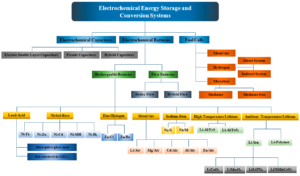The Driving Factors For the Battery Energy Storage System
Driving Factors For the Battery Energy Storage System
The battery energy storage system is becoming a vital solution to electrification and renewable energy development. This technology meets the needs of utilities, transmission network operators, and electricity end users for load management, grid flexibility, and backup power. It is a fast-growing industry, with deployments expected to increase 30 to 40 percent annually through 2025.
There are several factors that contribute to the growth of the battery energy storage system. In the short-term, low cost and a wide variety of use cases are driving strong growth. However, the market has several hurdles. The lack of infrastructure, ambient conditions, and long shipping distances can make energy storage battery system difficult to implement. These factors are particularly challenging in remote regions such as islands. In the coming years, the market is expected to be further supported by technological advances and rising demand.
The battery energy storage system is most commonly deployed in off-grid and remote areas, such as islands. These remote locations face many challenges, including variable power generation and supply from renewable energy sources, limited electricity supply, and costly maintenance due to insufficient infrastructure. As a result, battery energy storage systems are becoming an increasingly popular option for residential and commercial applications.
The battery energy storage market is growing rapidly, thanks to decreasing costs and improved technology. Today, lithium-ion battery prices have fallen 50 to 60 percent, making them more affordable for end-users. The cost of a battery system can range from a couple of hundred dollars to thousands of dollars, depending on its capacity.

The Driving Factors For the Battery Energy Storage System
The battery energy storage system (BESS) helps balance the electricity demands during off-peak and on-peak hours. Because the demand for electricity rises at peak hours, electricity costs are higher. However, during off-peak hours, electricity prices are lower. In such situations, BESSs allow users to “shave” electricity costs during off-peak hours, thus allowing them to lower their energy bills.
Growing adoption of renewable energy sources and government environmental policies are two major driving factors for the battery energy storage system market. Growing demand for uninterrupted power supply is another important factor. These factors will likely continue to boost the battery energy storage system market in the coming years. With these factors in mind, battery energy storage systems are expected to be the norm in residential and commercial settings.
In the early stages of the Ebola outbreak, people’s livelihoods were disrupted. The epidemic disrupted supply chains globally, and affected production across industries. This is expected to increase usage of batteries and battery energy storage systems in 2032. Furthermore, the global shutdown of manufacturing facilities is another factor affecting the battery energy storage market in the next few years.
The APAC region is one of the largest markets for battery energy storage systems and is projected to grow at the fastest rate during the forecast period. The region will account for the largest share of the global battery energy storage system market by 2021. The region is undergoing rapid urbanization and industrialization, and is expected to lead the industry growth. The growing economies in the region are also introducing new policies to improve power quality and distribution.